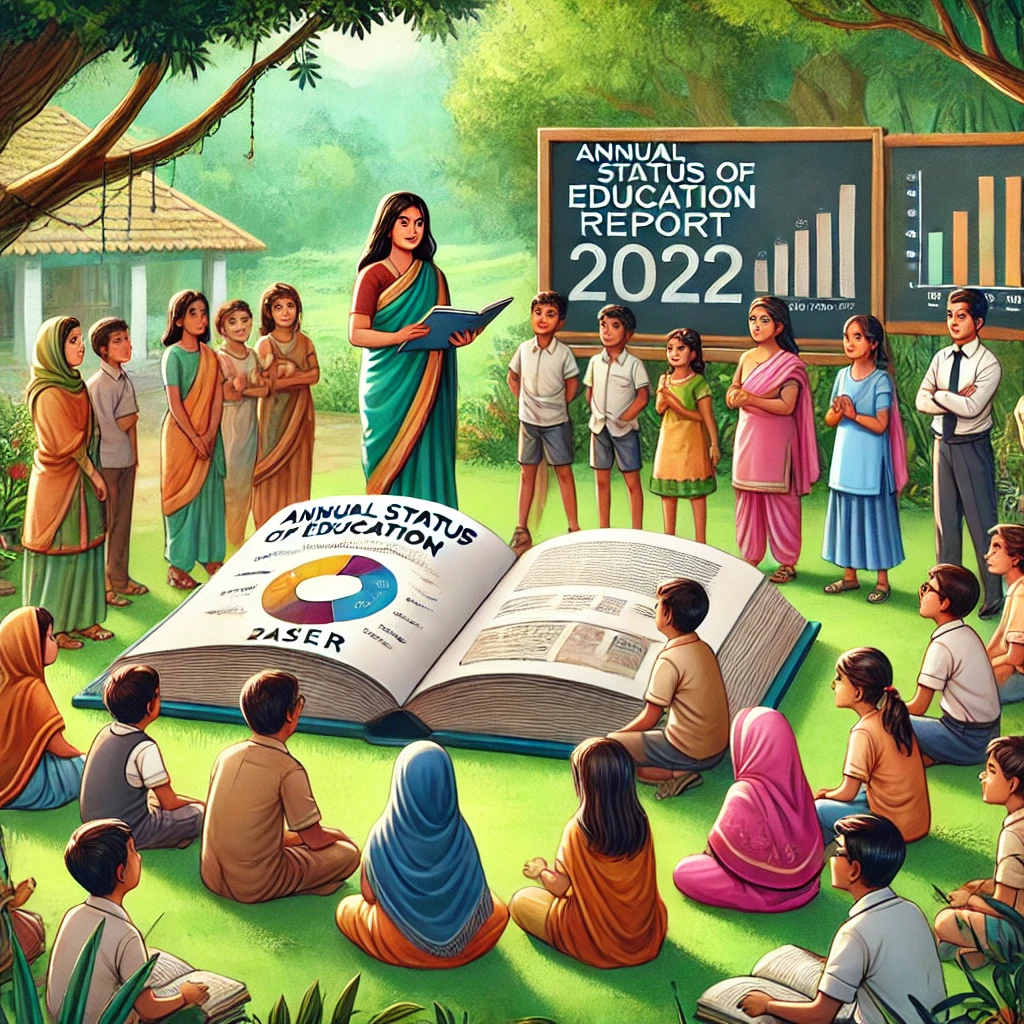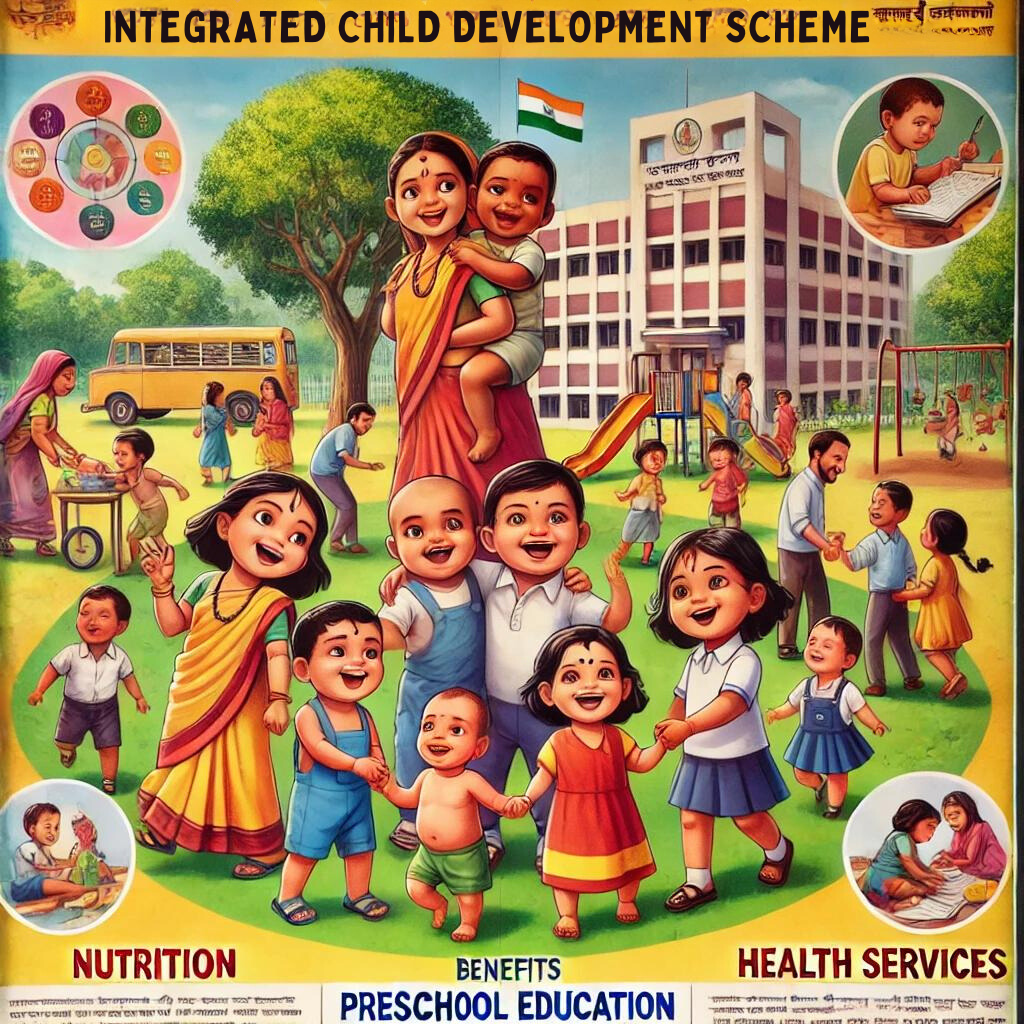The 17th Annual Status of Education Report (ASER) 2022 by NGO Pratham highlights the state of education in India post-pandemic. The report shows high school enrolment rates, indicating the success of government programs like the Nipun Bharat Mission. However, it also reveals a decline in basic reading and arithmetic skills among young children, reflecting the adverse effects of the pandemic on education.

Report Overview
The Annual Status of Education Report (ASER) 2022, released by NGO Pratham, holds immense significance in understanding the state of education in India, particularly in rural areas. The 17th edition of this report reflects the impact of the COVID-19 pandemic on education, shedding light on various trends in school enrollment and learning outcomes. ASER serves as a critical tool for policymakers to assess and improve educational policies.
What is ASER?
ASER is an annual, citizen-led household survey that commenced in 2005. It aims to determine whether children in rural India are enrolled in school and if they are acquiring basic reading and arithmetic skills. This survey is unique in its scope and approach. Thus, providing valuable insights into the rural education landscape at the national, state, and district levels.
Survey Scope
ASER’s primary objective is to measure school enrollment and learning outcomes in basic reading and arithmetic. This citizen-led survey offers an extensive look into rural India, focusing on how well children are performing academically. The survey’s data serves as a benchmark for understanding the effectiveness of educational initiatives.
Survey Reach
ASER is the largest survey of its kind, covering all rural districts in India. Its comprehensive reach ensures that the data collected is representative of the national, state, and district levels. This extensive coverage allows for a detailed analysis of educational trends and challenges across the country.
Findings of the Report
The 2022 ASER report presents several key findings that highlight both progress and areas of concern in the Indian education system. The data reveals trends in school enrollment, basic reading and arithmetic skills, and gender equality in education. Thereby, offering a nuanced view of the current educational landscape.
Enrollment in Government Schools
The report notes a significant increase in enrollment in government schools, indicating a positive trend. This rise in enrollment is a promising indicator of the effectiveness of government programs aimed at improving access to education. The data suggests that more children are attending school, which is a crucial step towards achieving universal education.
Basic Reading and Arithmetic Skills
There has been a decline in basic reading and arithmetic skills among young children in Class 3 and Class 5. This decline highlights a critical area that requires immediate attention. Ensuring that children not only attend school but also acquire essential skills is vital for their overall development.
Proportion of Girls Not Enrolled
The proportion of girls not enrolled in schools for the age group 11–14 has decreased significantly. It is mostly from 4.1% in 2018 to 2% in 2022. This positive trend indicates progress towards gender equality in education. Efforts to promote girls’ education are yielding results, contributing to a more inclusive educational environment.
Annual Status of Education Report 2022 Statistics
The 2022 ASER report provides a wealth of statistical data that offers a detailed view of various educational parameters.
- Overall Enrollment (Age Group 6-14): The overall enrollment of children aged 6–14 has shown a positive trend, increasing from 97.2% in 2018 to 98.4% in 2022.
- Enrolled in Government School (Age Group 6-14): Enrollment in government schools for children aged 6-14 has also increased positively, from 65.6% in 2018 to 72.9% in 2022.
- Girls not Enrolled in School (Age Group 11-14): The proportion of girls not enrolled in school has decreased from 4.1% in 2018 to 2% in 2022.
- Children in Std I-VIII Taking Paid Private Tuition Classes: There has been an increase in the number of children in Std I-VIII taking paid private tuition classes, from 26.4% in 2018 to 30.5% in 2022.
- Children in Std III (Government or Private Schools) Able to Read at Std II Level: A concerning trend is the decrease in the percentage of children in Std III who can read at the Std II level, from 27.3% in 2018 to 20.5% in 2022.
- Children in Std III who are Able to at Least Do Subtraction: The percentage of children in Std III who can perform subtraction has decreased from 28.2% in 2018 to 25.9% in 2022.
- Children in Std V across India who Can Do Division: The ability of children in Std V to perform division has seen a slight decrease, from 27.9% in 2018 to 25.6% in 2022.
- Government Schools with Less than 60 Students Enrolled: There has been a slight increase in the number of government schools with less than 60 students enrolled, from 29.4% in 2018 to 29.9% in 2022.
- Average Teacher Attendance: Teacher attendance has shown a positive trend, increasing from 85.4% in 2018 to 87.1% in 2022.
- Fraction of Schools with Useable Girls’ Toilets: The proportion of schools with usable girls’ toilets has increased from 66.4% in 2018 to 68.4% in 2022.
- Schools with Drinking Water Availability: The availability of drinking water in schools has seen a positive trend, increasing from 74.8% in 2018 to 76% in 2022.
Conclusion
The ASER 2022 report showcases a mixed landscape of India’s educational journey post-pandemic. While increased enrolment and improved gender parity are encouraging, the decline in basic reading and arithmetic skills is alarming. As future policymakers, UPSC aspirants must delve deeper into these insights. Thus, they are striving to bridge gaps and enhance India’s educational framework for holistic development.

